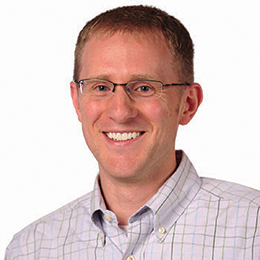Our aim is to tell compelling stories. Feature producers coordinate and conduct interviews, shoot elements that help tell the story visually, structure stories, write scripts, sometimes alongside a reporter or host, and put it all together with the immense help of an editor. For me, that’s meant a lot of hockey, including prospect profiles on Nathan MacKinnon and Connor McDavid, among many others; [Canadiens goalie] Carey Price competing in rodeos in the off-season; [Kings head coach] Darryl Sutter’s unique post-game press conferences; and Taro Tsujimoto, a fictional player created and then drafted by the Buffalo Sabres in 1974.

It depends on the story. If the interviews are local and the story’s straightforward, it’s maybe a few days of work. But things are often more complicated than that, and it’s not unusual for a producer to work several weeks on a story doing things like researching, pre-interviews, shooting, writing and editing. I’ve been doing this for six years now and it often still hits me: “all this work for only five minutes of television?”
It’s manageable, maybe five or six days a month. But there are busy stretches, which for example, for me is every November and December, ahead of the World Junior [Hockey] Championship. That brings the average up. And then, of course, there was the Olympics. I spent all of February 2010 in Vancouver.
Twice I travelled to the Ivan Hlinka Memorial Cup, a hockey tournament played every August in two towns: Piestany, Slovakia and Breclav, Czech Republic. Beautiful towns and a unique experience for me: the only times I’ve been outside of North America for work. The tournament is an annual tournament for under-18s, and nearly all the top prospects play. The games in Piestany are played in the same Soviet-era arena where the infamous Canada/USSR World Junior brawl happened in 1987.
You never really finish a feature and think, “perfect.” Second-guessing is an infinite state. But last fall we told Bryan Murray’s story. Murray is the general manager of the Ottawa Senators and is living with Stage-4 cancer. If he’d been properly screened, his cancer could have been avoided. The story motivated several people that we know of to schedule a colonoscopy and at least one of them discovered he had precancerous polyps, which means they caught it in time. No other stories I’ve produced have had that kind of impact.
Murray. It’s rare that a person is open and honest about personal and intimate things, about sickness and death and regret. Rarer still to be so open and honest on camera.

Matt Cade working on a shoot for TSN's parody of the hit viral video "Out for a rip." Photo courtesy of Matt Cade.
I was fortunate to be able to work three Stanley Cups: ‘06, ’07 and ’08. I don’t know if the [Carolina] Hurricanes’ arena — which was at that time called the RBC Center — was the best, but it was incredible, and it stands out in my mind I think because it was the first Cup final game I’d ever been to, and, quite frankly, I was stunned to see how passionate the fans in North Carolina were about their hockey team.
I enjoy producing features on the prospects. They’re young and they haven’t necessarily lived particularly interesting lives yet (eat, play hockey, work out, sleep, repeat), but they have this incredible skill and this equally incredible focus and dedication. It’s fascinating to get to know someone — even if it’s only for a few days — on the verge of money and fame and this titanic shift in their lives.
I didn’t. After writing and editing at The Cord for three years, the goal was to work as a newspaper reporter. But a chance meeting with Elliotte Friedman while I was studying journalism at Ryerson — I was a bartender at his sister’s wedding — pointed me toward television. Friedman’s advice was simple: there were a lot more jobs in broadcast than in print. It’s absolutely the right place for me. Thank you, Elliotte.
While I was at Ryerson, I started working at the FAN, a sports radio station in Toronto. I cold-called the morning show producer one day and for some reason he gave me a job clipping audio from Maple Leafs games on Saturday nights that the on-air guys and girls would use for their updates. It wasn’t a paying gig, but it turned into a job a few months later. The following year, I got an internship at TSN, working in the SportsCentre newsroom. I’ve been with TSN ever since.
The people. Lifelong friendships, many of which began in the Cord office. Plus the co-ed intramural soccer championship. We were total underdogs.
Of course. My time at Student Publications in particular connected me with the world really for the first time in my life, and it led me to my career. Though the stakes may have been lower, a year as Editor-in-Chief at The Cord was as demanding and intense as anything I’ve done since.
The creativity, the flexibility, the movement and travel. Meeting new people with new and different stories each month, each year. Senior producers who give me great opportunities. A chance to work with some of the best sports journalists in the country, like James Duthie and Michael Farber.
I’m never sure how to answer this question. It’s not for everyone. Be patient. Work hard. Watch sports. Read about sports. Seek out interesting and compelling stories. Do not hope for a Bay Street salary. Get experience however you can. Write for your student publication. Work at your local TV station. Prove yourself, then prove yourself invaluable.